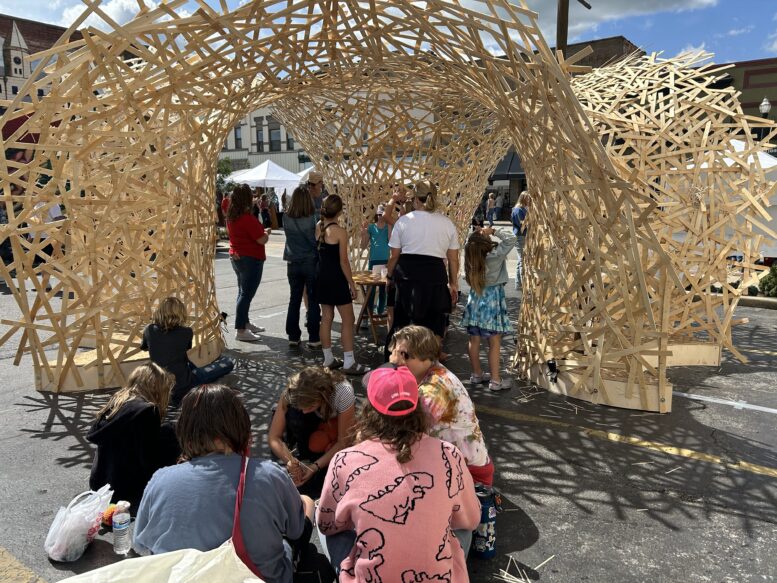By DAVID DUPONT
BG Independent News
If that Little Pig who favored sticks as a no building material had Gerard Nadeau as an architect, the ravenous wolf would have been foiled.
Nadeau, a professor of architecture at BGSU, doesn’t make houses for pigs.
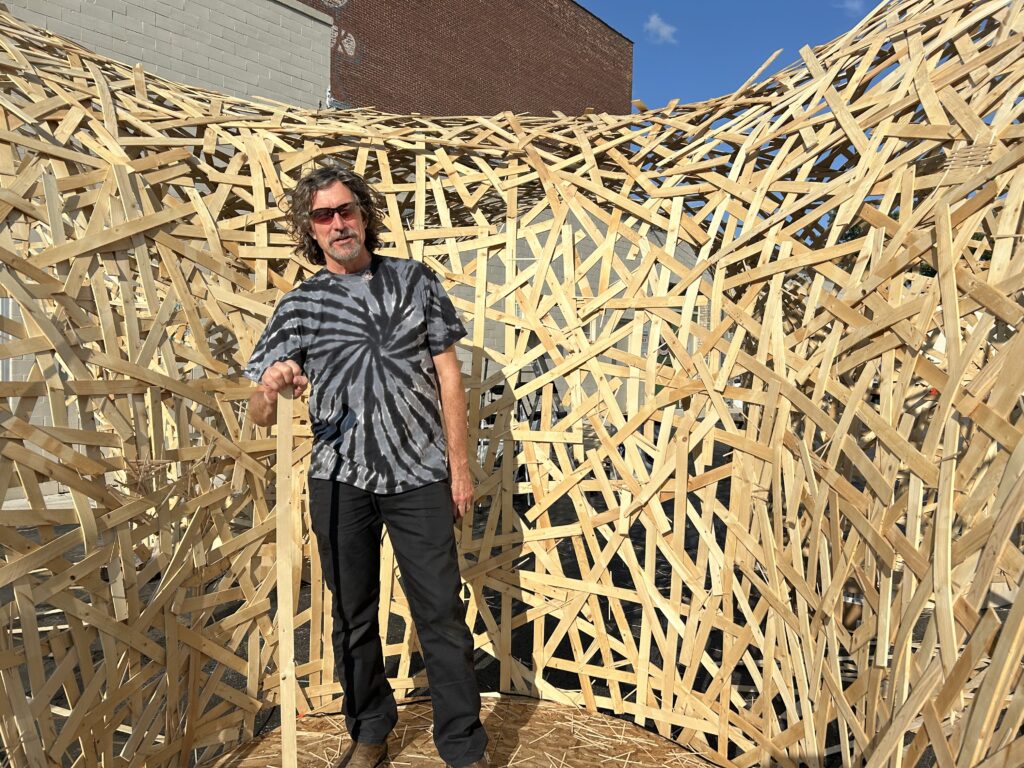
He coordinates the construction of temporary woven wooden structures that have graced the Black Swamp Arts Festival the past two years, and in Kokosing Hall’s innovation lab and elsewhere.
This weekend he will build one outside the Toledo Museum of Arts’ Glass Pavilion as part of the museum’s block party. The weekend after he will reconstruct a version of Green World Annex that was done for the dedication of Kokosing Hall.
The structures twice the height of a tall person are made of two/by-four framing lumber. Nadeau and a crew assemble the basic structure. No metal fasteners or adhesives are used. Only friction holds them together. People are impressed when they touch them how solid they are.
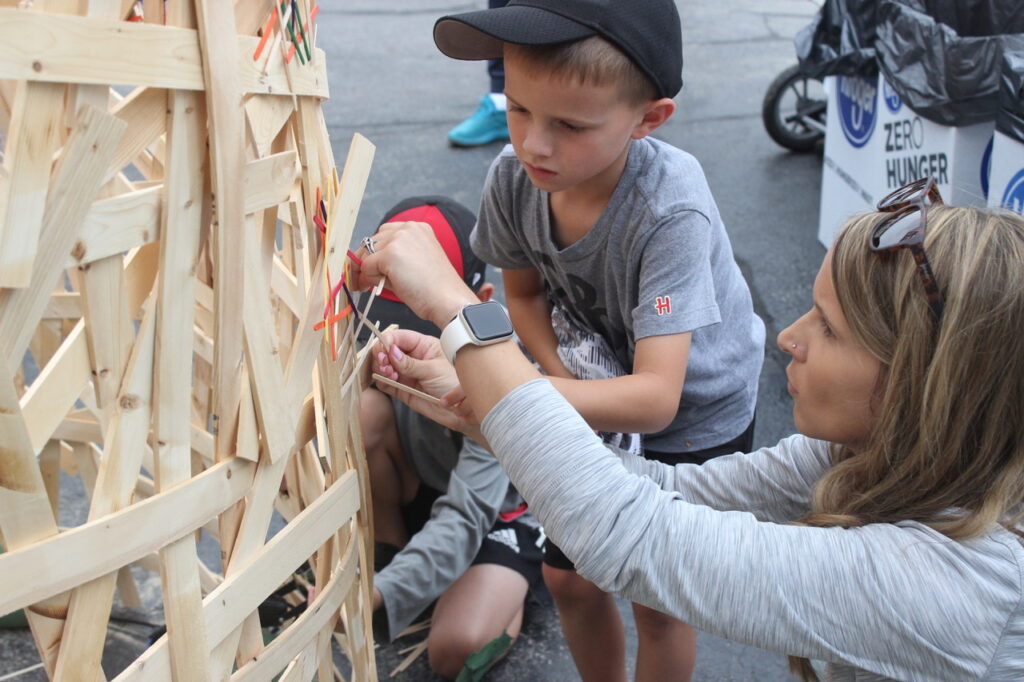
Once the structure is up, he leaves out stir straws out, for children and adults to weave in on their own.
“I’m still amazed what happens when those stir sticks are out,” Nadeau said. “If not for stir sticks, it’s just this sculpture. People would say ‘this is nice’ and walk through. If stir sticks are in the basket, a few kids will show up and then their parents, then more kids and more parents and then you have a dozen people.”
At this past weekend’s Black Swamp Arts Festival, Nadeau set out 10,000 stir sticks, and they were all used.
This work was inspired by collaborations he’s had in other places he’s lived. He collaborated with the Weaving Hand Art studio in Brooklyn. Then while on faculty at Drury University in Springfield. Missouri he decided to get involved in the city’s Friday Art Walk, which drew thousands of people to the city’s fading downtown.
The owner of a coffee shop offered to host an art sale for students’ work, but his fellow faculty members dismissed the idea. People don’t purchase art at the event, they said.
So working with the woman’s landlord, he conceived of these temporary structures.
The downtown had a 20-percent vacancy rate downtown. Entire office buildings were empty.
While development efforts addressed economic issues, Nadeau felt a different approach could help.
“I was more into the social aspect,” he said. “Obviously people were excited about revitalization. Nobody was buying anything. We need to do something on the scale of architecture as an embodiment of this enthusiasm.
“Why not get people involved in the revitalization by building amazing stuff?”
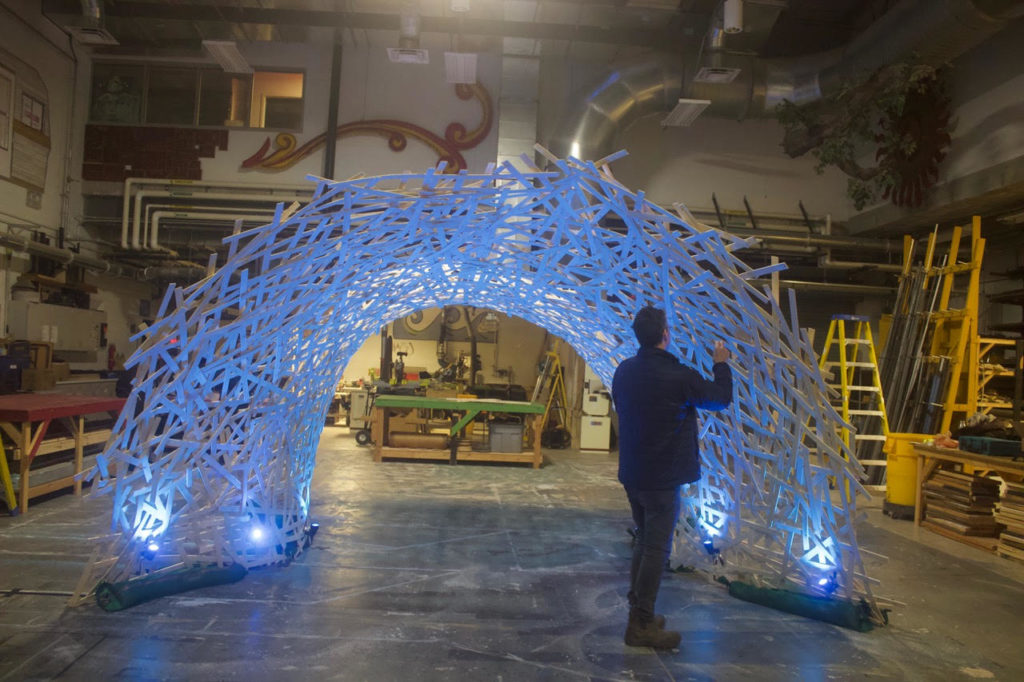
The idea was to develop techniques to create these engaging structures using inexpensive, every day materials. Building using stir sticks using proved to be too onerous. Then he realized he could easily scale up the construction using the two-by-fours.
“So we just started weaving these things,” he said. But he wanted them to be more than static works, so he added the stir stick activity.
That was 10 years ago. He’s done several more elsewhere. One at Stetson University in central Florida in a green area on campus, called the Arbors with a stage.
Here the connection to Shakespeare, particularly the play “As You Like It,” came to the fore.
The woven structures are, Nadeau said, essentially wedding arbors. “As You Like It” and other Shakespeare comedies end with weddings.
“As You Like It” in particular celebrates the theme of characters fleeing the corruption of cities to go to the woods where they can create a freer, purer society, Nadeau said.
“The little woven additions also echo the love notes that Orlando left hanging in the Forest of Arden for Rosalind.”
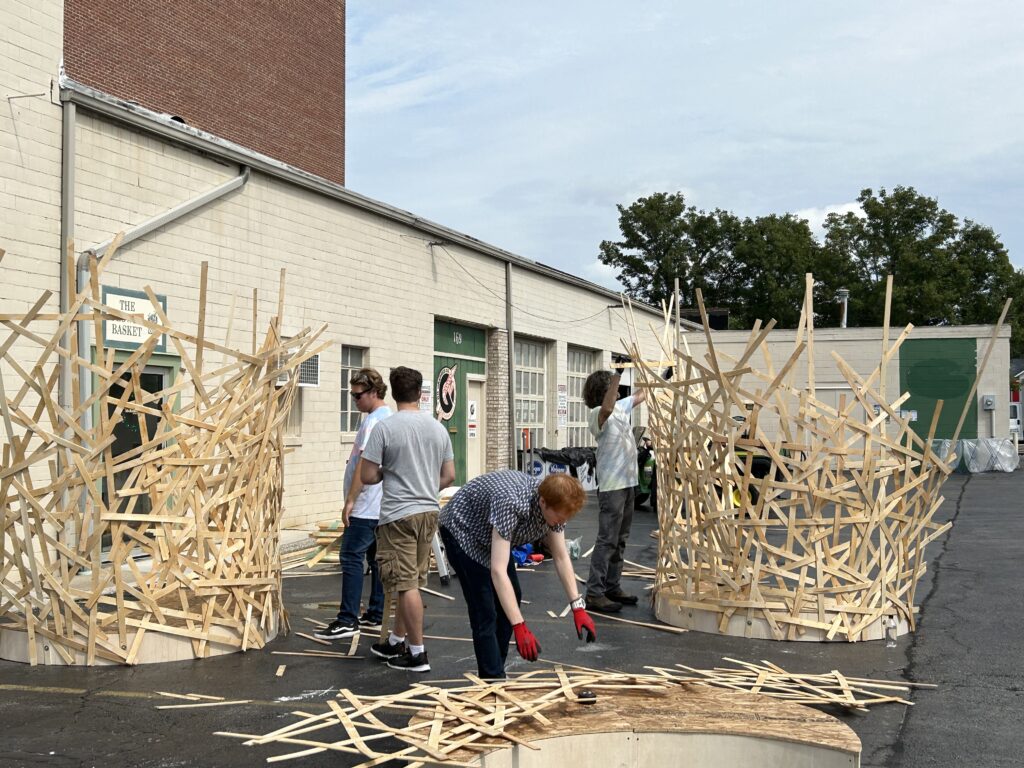
Nadeau made one of the woven structures for an exhibit at BGSU celebrating Diversity and inclusion.
Jennifer McCary, former chief DEI officer at BGSU and now chief people and culture officer for the Toledo Museum, reached out to him about creating one for the block party.
He looked at the dates. The weekend fell right between the Black Swap Arts Festival and the Momentum Festival in downtown Toledo.
McCary told him they could put it off for a year. But Nadeau believes that “you don’t put things off when you have a chance, you grab it.”
The museum structure will be built outside the Glass Pavilion and will stay in place for several weeks.
The Florida arbor was also out in the elements, but the frequent thunderstorms convinced Nadeau it needed to come down.
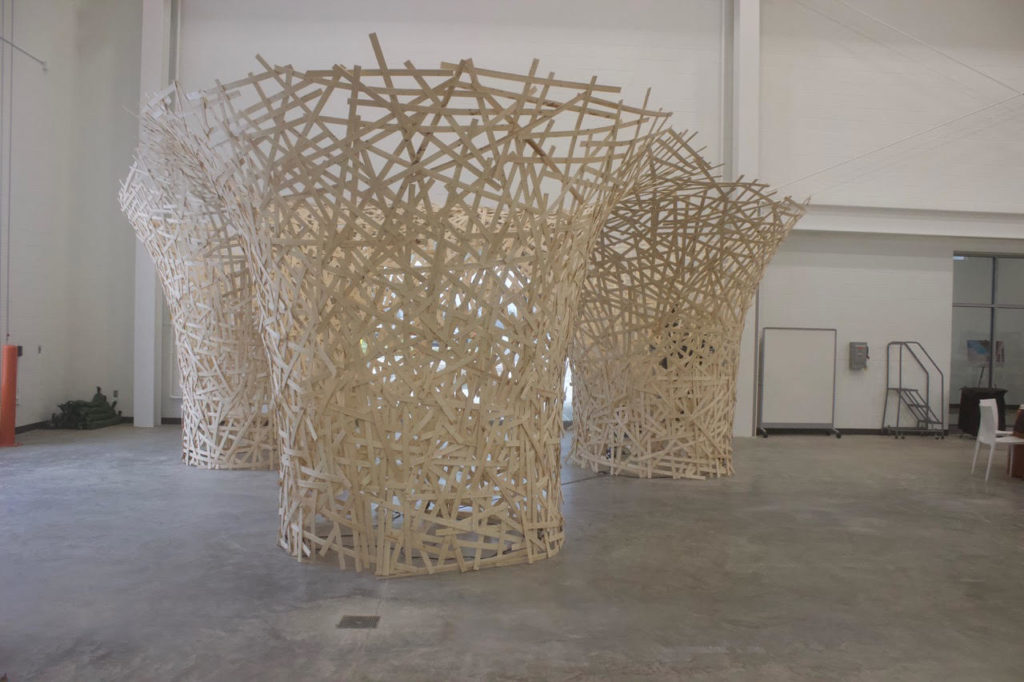
The structures are temporary — all buildings are — it’s just a matter of the time scale.
Nadeau reuses the material, though some of the stir sticks get stomped on and dirty.
For the block party, he will dye the stir sticks as a nod to the theme of diversity.
The Momentum structure will be a reconstruction of the Green World Annex that was in Kokosing Hall.
He will “beef it up” structurally and weigh it down for its outdoor iteration.
Some architects think these are examples of parametric design in which engineers use algorithms to create customized structures and digital fabrication.
They are, Nadeau said, “digitally constructed.” The digits though are attached to human hands, and they don’t follow a strict plan. Changes are made as the woven structures go up.“They are kind of the antithesis of generating forms on the computer and then constructing them with the help of robots.”
For architecture students, this shows them that their field is a social endeavor.
Also, “they learn about thin shell structures, double curvature, and how it creates rigidity.”
And they learn about “doing more with less,” he said. An essential lesson “because we’re always asked to bring cost down,” Nadeau said. “With this technique for a few hundred dollars worth of lumber,, we can create these spectacular temporary structures.”

